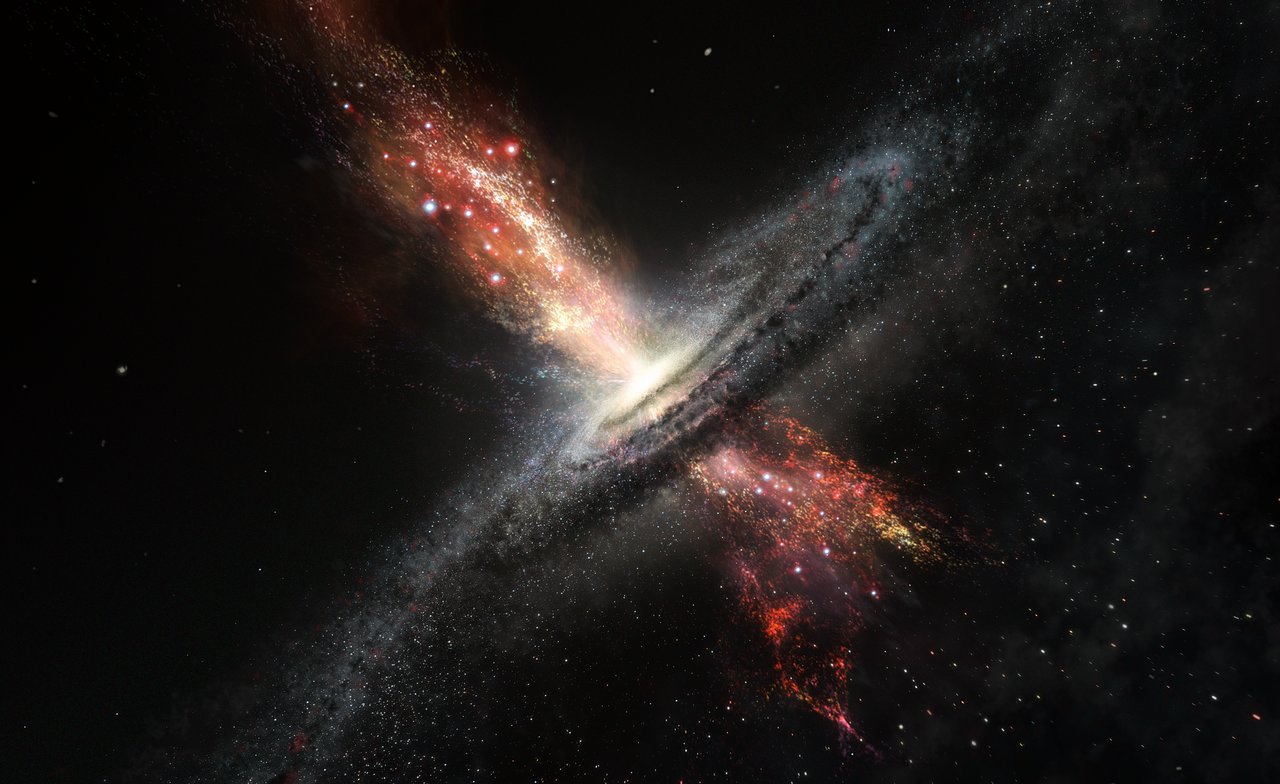
Supermassive Black Hole caught burping not once but twice
A massive black hole present in the middle of the galaxy about 800 million light-years away from Earth was recently caught letting out two simultaneous burps that consisted of extremely charged particles. These so-called ‘Burps’ are an after effect of gorging on hot gases. Essentially, a black hole is a celestial sinkhole that sucks in any cosmic gas that comes near it. However, a part of this cosmic gas escapes back as a burp into space.
The Chandra and Hubble space telescopes recently detected two burps emerging from this black hole. One of these was the remnant of a burp that occurred around 100,000 years ago. During the 21st American Astronomical Society meeting organized in Washington DC, Julie Comerford, from the University of Colorado, explained that the black holes are rapacious eaters with a lack of table manners.
A black hole letting out a single burp is quite common but one with two burps is one of its kinds. This particular burp consists of highly energized particles that come out in form of streams which is kicked out from the mouth of the black hole. A supermassive black hole can be seen at the center of all large galaxies. The Chandra telescope picked up X-ray emission from the SDSS J1354+1327 galaxy which helped the researchers point out the exact location of the black hole.
Hubble captured a particular cloud reflecting gas of blue-green color that was extending away from the black hole. This was a representation of the aftermath of a burp that occurred sometime earlier. The gas that was emitted from the black holes has electrons that were stripped away from the atoms. These electrons were stripped because of a radiation burst that occurred in the vicinity of this massive black hole.
Meanwhile, the gas burp had expanded around 30,000 light years far from the black hole. However, the astronomers saw a small loop in the obtained images which looked like a new burp emerging from this sinkhole. The latest burp looked more like an actual shockwave that is being expelled out in a rapid fashion.
It’s like you are having dinner and look at some old burp still present in the environment from the previous meal and now one more burp has taken up the air around you which much more strong than the previous one.
The black holes reflect a high intensity of light when they consume the celestial objects around them and during the burping event followed by a dark phase as they take a nap from consuming the energy from the objects falling in its vicinity.
Earlier, theories predicted that the black holes used to flicker very often but the recent study has concluded that black holes turn themselves off for a duration of hundreds of thousands of years or even more. This is very long timescale for humans but really fast for cosmological processes.
The scientists speculate that this supermassive black hole emitted two different burps as it consumed two different celestial objects at a different time. Two rapid burps from the black hole could also arise from the fact that the parent galaxy of the black hole might have collided with any other neighboring galaxy to produce a humongous amount of cosmic gas. This produced a giant feast for the black hole to feast on.
The findings of this study were published in the journal Astrophysical which explained that the two galaxies are connected via a stream of bright stars. The collision between two galaxies fed the stream of these energy-packed stars to the supermassive black hole which resulted in these burps occurring at two separate events.


